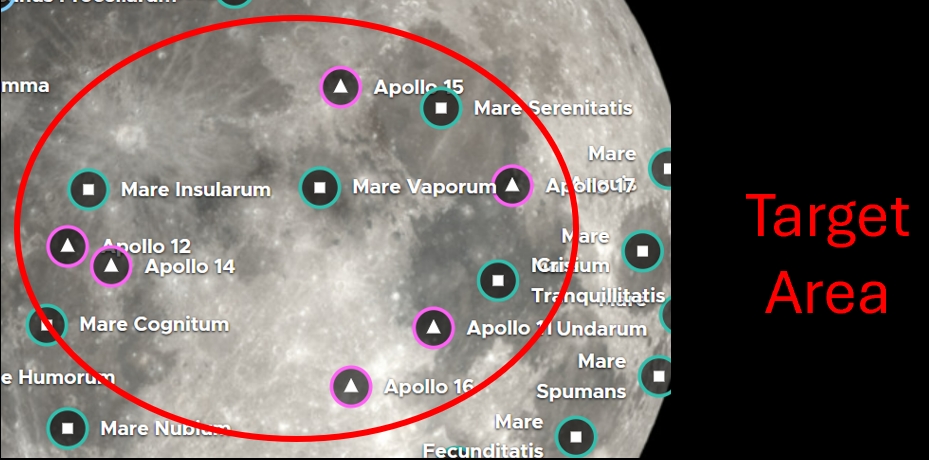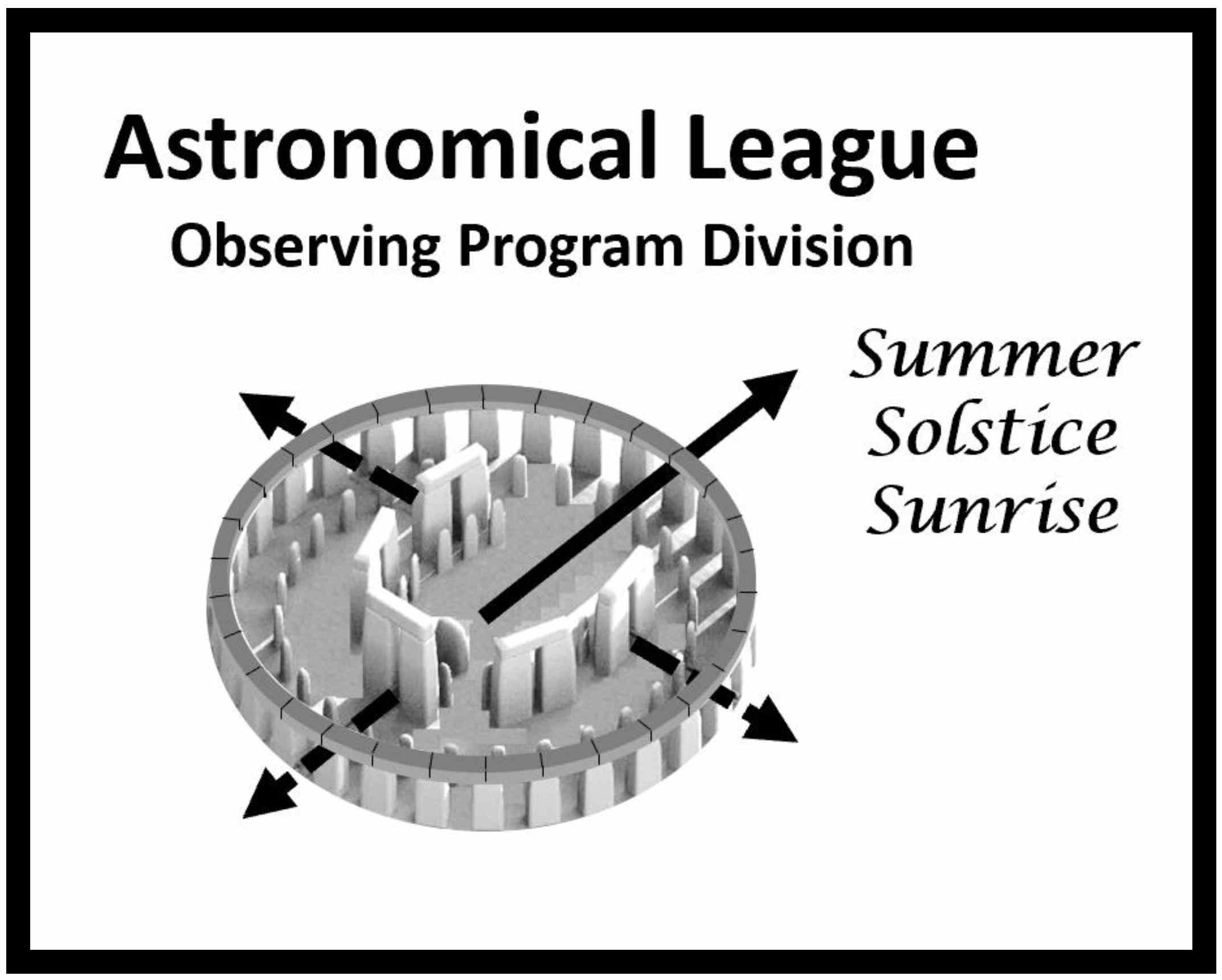AL Observing Challenge and Special Award Coordinator:Cliff Mygatt |
|
IntroductionThe Astronomical League has identified opportunities to commemorate special astronomical events and bring you AL Observing Challenges. New opportunities will be added as significant celestial events are identified. |
Requirements and RulesTo earn the certification, you need to meet these requirements:
You do not need to be a member of the Astronomical League to receive the first level of this certification, but it is required for the second level. If you are not a member and would like to become one, check with your local astronomical society, search for a local society on the Astronomical League Website, or join as a Member-At-Large in the member at large . |
 |
The AL Observing Challenges
Current Challenges:
10. T Coronae Borealis Observing Challenge and Special Observing Award. (deadline for submission will be one month after the eruption)
Effective immediately, the Astronomical League is bringing you another Observing Challenge. This one is for the pending eruption of the Nova T Coronae Borealis. it is expected to happen some time between now and September. There will be two levels of this award, both will include certificates and Level 2 will include a pin.
Levels and their requirements:
Level 1 – AL Observing Challenge. (certificate only)
- This level may be done by anyone, even non-members of the Astronomical League.
- This may be done visually through a telescope or through imaging.
- Two observations are required:
- Observe T Coronae Borealis before the eruption (now).
- Observe T Coronae Borealis during the Nova stage.
- An Outreach Activity is also required, to share this event with the public.
Level 2 – AL Special Observing Award. (certificate and pin)
- This level requires membership in the Astronomical League.
- The brightness data (measurements from your observations) must also be submitted to the American Association of Variable Star Observers.
- Their website: https://www.aavso.org/
- You must have an account and an ID with AAVSO to submit. You do NOT have to join AAVSO to submit.
- This is much more valuable (and accurate) if you are doing this through imaging.
- We encourage you you to also use a photometric “V” filter if possible.
- All instructions and information on submitting data is on the AAVSO website. They have manuals to help you with the process (https://www.aavso.org/observing-manuals.):
- Visual observers should use the “Manual for Visual Observing of Variable Stars”
- Monochrome CCD/CMOS images should read the “Guide to CCD/CMOS Photometry with Monochrome Cameras” and
- Folks with color cameras, including DSLRs should go to the “DSLR Observing Manual”.
- You should make the first observation as soon as you can, before T Coronae Borealis erupts, even if you are not yet set up to submit data to the AAVSO. The important piece is to collect the data now.
- This is the same process that is used in the Astronomical League’s Variable Star and Nova Observing Programs.
11. Solar Maximum Observing Challenge. (deadline for submission is April 30, 2025)
Effective immediately, the Astronomical League is bringing you another Observing Challenge. This Challenge is to experience the Solar Maximum. There will be one level of this award and recognition is in the form of a certificate. You do not need to be a member of the Astronomical League to participate in this challenge and to receive the certificate. Although no telescopes of binoculars are required for this award, you will need to build an inexpensive homemade magnetometer. Note: For Astronomical League members, these Observations may be used and submitted as part of the Space Weather Observing Program.
Submission Requirements:
- Build a soda bottle magnetometer.
- Instructions can be found here: https://www.astroleague.org/wp-content/uploads/2024/09/Soda-Bottle-Magnetometer-2.pdf
- Materials needed are:
- An empty 2-litre soda bottle.
- A couple inches of ballast (sand or small pebbles) to keep the bottle stable.
- A small lightweight mirror.
- A small bar magnet. One to two inches long to fit inside the bottle.
- A drinking straw.
- Thread.
- A small index card.
- A yard stick or a meter stick.
- A white flat target.
- A light source (a faint red laser works well).
- Use that magnetometer to detect variations in the Earth’s Magnetic Field.
- Do a minimum of 50 observations.
- Note: this can be done inside and even in bad weather.
- Challenges we have noted with the Magnetometers can be found here: https://www.astroleague.org/wp-content/uploads/2024/09/Magnetometers-Challenges.pdf
- You may start immediately but must finish them by March 31, 2025.
- You may do up to two observations daily, ideally about 12 hours apart.
- The magnetometer must be somewhere where it will not be disturbed.
- Note: we have received some feedback that it is critical to place the magnetometer and the laser on a very solid surface. If not, the spot (and the mirror) move due to vibrations.
- In your observation log, note the location along the yard stick or meter stick where the reflected laser spot is located.
- Compare your observed activity with observations from NASA.
- NASA data for the Planetary K-Index can be found on this web page: https://www.swpc.noaa.gov/products/planetary-k-index.
- Include copies of the column charts in your observation logs.
- Note sunspot activity on the Sun.
- A good source for this is: https://www.spaceweather.com/.
- Click on the image of the Sun on the left side of the web page to see more detail. Include copies of these images in your observation log.
- Information on individual solar flares and active regions on the sun can be found here: https://www.spaceweatherlive.com/en/solar-activity/solar-flares.html.
- Predict expected auroral activity in the Earth’s Atmosphere.
- Light reaches the Earth from the Sun in a little more than 8.33 minutes.
- Charged Particles in the solar wind (space weather) travel slower. Charged Particles in the solar wind travel from 250 to 750 km/second, or roughly 560,000 miles/hour to over 1,675,000 miles per hour.
- The Sun is roughly 93 million miles (149 million kilometers) from the Earth.
- This means that charged particles will reach Earth some time between 55.5 to 166 hours or between 2.3 and 6.9 days.
- Compare your prediction with actual activity. (Personal observations of the Aurora are not required, but certainly would add a level of excitement to those who can see them.)
- Auroral activity can be seen on the same page as the sunspot activity: https://www.spaceweather.com/.
- Scroll down to the current auroral activity map. Default is for the northern hemisphere, but there are alternative maps if you are observing elsewhere.
- Click on the image of the auroral map on the left side of the web page to see more detail. Include copies of these images in your observation logs.
- Do an Outreach Activity to share this event with the public.
- Observations must be done before March 31, 2025. Submissions for this award are due to the Coordinator by April 30, 2025. Late submissions will not be processed.
13. International Observe the Moon Night Observing Challenge – 2025. (deadline for submission is November 11, 2025)
The Astronomical League is once again partnering witih NASA for the 2025 International Observe the Moon Night. We are bringing you another Observing Challenge. And like most of our Observing Challenges, you do not need to be a member of the Astronoical League to participate. It is open to everyone.
- The NASA web page for the International Observe the Moon Night is: The NASA Observe the Moon Night Website
- The downloadable certificate for participants can be found here.
Requirements:
- Do an observation of the Moon with either Binoculars or a Telescope. It may be done Eyes Only, but the details will be very small and s omewhat difficult to see.
- The observation must be done between October 2, 2025 and October 11, 2025 to be able to see the four required Maria.
- The observation may be done visually or through imaging. Include information on the equipment used.
- Observe these Maria (dark areas):
- Mare Serenitatis
- Mare Tranquilliatatis
- Mare Imbrium
- Mare Cognitum
- Label these four Maria and also the 6 Apollo Mission landing sites.
- Do an outreach activity to share information about the Apollo Missions or the Moon. This may also be the Observe the Moon event itself.
- Submit the required information and the sketch or image to the Coordinator.
- Deadline for submission is November 11, 2025. Late entries will not be accepted.
The Observing area on the Moon:

Useful Links for Various Challenges:
- The Observe the Moon Night Website
- AAVSO website: https://www.aavso.org/
- AAVSO – T Coronae Borealis web page: Click here: https://www.aavso.org/news/t-crb-pre-eruption-dip
- NASA – T Coronae Borealis web page: Click here: https://blogs.nasa.gov/Watch_the_Skies/2024/02/27/view-nova-explosion-new-star-in-northern-crown/
Submitting for an award with the Astronomical League: Submissions for an AL Observing Challenge should be done through the Coordinator for the AL Observing Challenges..
Information required:
- Your name, eMail address, Postal Address, and Phone Number
- Your Astronomy Club affiliation (or Member at Large) if you are part of the Astronomical League
- Sketches or Images
- Equipment used
- Dates and Times
- Latitudes and Longitudes of the Observations
- Information about the Outreach Activity
Past Challenges:
1. The Great Conjunction Observing Challenge (deadline for submission was February 21, 2021)
2. Observing The Moon Observing Challenge – 2021 (deadline for submission was October 16, 2021)
3. The AL 75th Year Anniversary Observing Challenge (deadline for submission was December 31, 2021)
4. Astronomical League Galaxy Season Observing Challenge (deadline for submission was June 30, 2022)
5. Astronomical League Globular Cluster Observing Challenge (deadline for submission: October 31, 2022)
6. Observing the Moon Observing Challenge – 2022 (deadline for submission: November 9, 2022)
7. Astronomical League – Moons Observing Challenge (deadline for submission: December 31, 2022)
8. Astronomical League – Galaxy Challenge 2.0 (deadline for submission: July 25, 2023)
9. Astronomical League Moon Observing Challenge – 2023 (deadline for submission: November 21, 2023.)
10. Astronomical League T Corona Borealis Challenge (still in progress)
11. Astronomical League Solar Maximum Observing Challenge (deadline for submission: April 30, 2025.)
12. Astronomical League Moon Observing Challenge – 2024 (deadline for submission: October 14, 2024.)
13. Astronomical League Moon Observing Challenge (deadline for submission: November 11, 2025.)
For details on the requirements for prior awards, click here.
AL Observing Challenges and Special Awards Coordinator:Cliff Mygatt |




